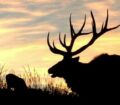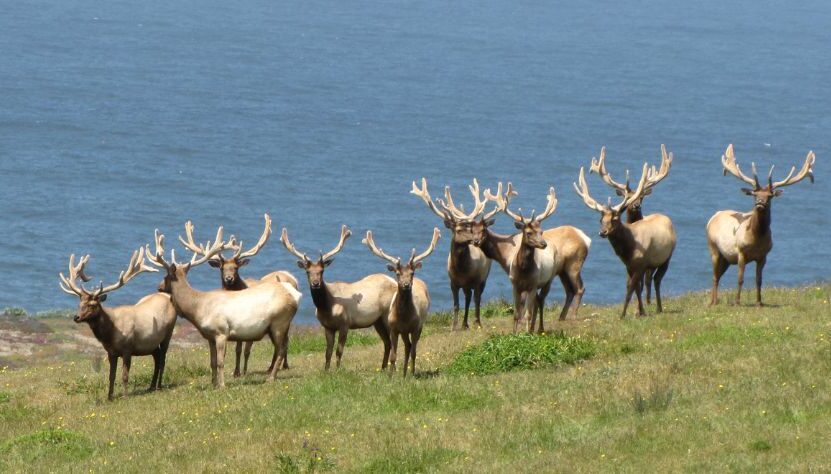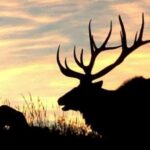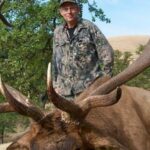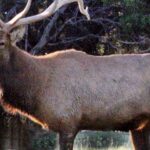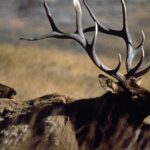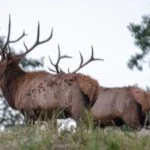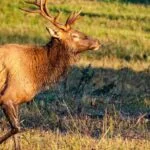Editor’s Note: In the turkey-hunting fraternity, one of the toughest turkeys to take in the Continental U.S. is the Osceola gobbler. Actually hunting the Osceola isn’t any different from hunting any other turkey; however, the area where he lives in Florida is very small. Although, there’s some public hunting for the Osceola, it’s fairly well restricted. The same is true about the Roosevelt elk and even more so the Tule elk. California is the only state that has both the Roosevelt and the Tule, as well as the Rocky Mountain elk. JITW wanted to take a closer look at these far western elk, and what’s required to take them.
So, we talked to Parrey Cremeans, a hunting guide from northern California, who has been hunting and guiding in the far west since 1988. His guiding service is called Just For Hunting, and his phone number is: 650-888-0808. He’s taken several elk and called in many more for his clients, besides guiding for black-tailed deer, mule deer, antelope, turkeys (Rio Grande and Merriam’s gobblers), bear, black bears and hogs. Or, to learn more about hunting elk specifically, you can find more information here. If you’re interested in hunting any one of these three elk subspecies, you need to book a hunt about two years in advance or even earlier than that. Here’s a map of California’s Elk Hunt Zones.
The tag for the Tule elk is one of the most-sought-after tags in the West. The demand is very high, but the number of tags given out is extremely small. In fact, most of the hunters who want to hunt Tule elk with us purchase a private land-management tag that usually costs from $25,000+ if you can get one. But your odds for harvesting a Tule elk are much greater with one of these tags than if you go into the open drawing. Most of the hunters who buy those tags are trying to fill out their bucket list of taking the North American 29. The North American 29 is a list of the 29 game species most prized by hunters on the North American Continent, including all the species of sheep, deer, elk, musk ox, polar bear and other hard-to-get big game species. As you know, drawing tags for some of these species in the North American 29 are becoming harder and harder to get. The minimum number of points that you have to have to draw a Tule elk tag is 19, though many of the hunters who put in for tags and have met the required 19 points still may not ever draw a tag to hunt this elk. That’s the reason that buying a landowner tag, regardless of the price, is in such high demand.
For a Tule elk, there’s probably no more than 18 to 20 tags given out to hunt this elk. There’s also a shared tag that allows a hunter to go in the lottery for specific lands to take a Tule elk – probably a total of 17- 20 tags. So, there’s probably only about 50 Tule elk tags given out to hunt each year. Including the private land-management tags, there’s probably no more than 75 total Tule elk tags that can be drawn or bought each year. A large number of big-game hunters need that Tule elk tag to complete the big 29. But only about 5,700 Tule elk live in the entire state.

The four different ways to get a Tule elk tag in California include: (1) the general draw; (2) a shared tag (which is a raffle); (3) a landowner tag; and (4) a private land-management tag. The landowner tags aren’t too difficult to get if you can find a landowner who’s working with the state to improve habitat for Tule elk on his property. However, as I’ve mentioned earlier, the price of that tag is very expensive. The landowner tag is the only tag that a person can transfer ownership of to take an elk. For instance, if a landowner draws a tag, and he’s in the program to help improve the habitat for the Tule elk, he can sell that tag. If you draw a landowner tag, you can’t apply for that tag again until the third year after you’ve drawn your first Tule elk tag.
The private land-management tag is a program in which the landowner puts his property in the state program, and the state dictates the improvements he needs to make to his land to increase wildlife habitat, depending on the size of the property, the population of the species on that property and the amount of habitat improvement the landowner makes.
The Tule is the smallest elk. A big Tule will weigh about 700 pounds, while an average Tule bull will weigh around 600 pounds. The Tule’s antler characteristics are similar to the Roosevelt’s antlers. They generally have numbers of abnormal points and have more of a crowning on the ends of their antlers. To go in the Boone and Crocket record book, a Tule must score 292 inches.
No other states have elk that qualify as Tule elk. As far as I know, California has the only herd of Tule elk in the U.S. The Tule live more in the central part of the state of California than either the Roosevelt or the Rocky Mountain elk. They usually like open oak savannahs, marshlands and open grasslands. There’s a population of Tule in the high desert close to Mount Whitney in east-central California. One of the most-popular areas to hunt these Tule elk is the Grizzly Island Area, which is a state-run 12,900-acre wildlife area. Some spike-only tags dictate which Tule elk you can shoot on Grizzly Island. The hunters who draw that tag usually have wildlife biologists hunting with them to make sure the hunter takes the right elk for the tag he’s drawn. These biologists generally monitor these elk all year long. If you draw that tag to hunt Grizzly Island, the tag will only cost about $500 for a resident. For an out-of-state hunter, that tag will be about twice as much as the resident tag. Of all three species of elk that we have in California, the Tule elk lives in probably the easiest country to hunt.
Looking for more content? Check out our YouTube channel and watch “Why Hunt in the Rain” by John E. Phillips.
Expert Guidebooks on Elk Hunting: Best Sellers
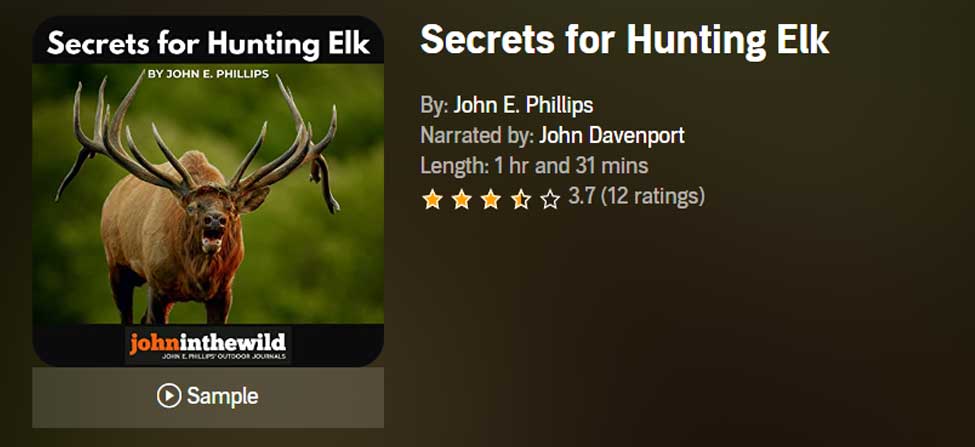
Secrets for Hunting Elk
The quickest, easiest (if there is an easy way), and safest way to find and take that bull elk of a lifetime will be to hunt with a guide.
Chad Schearer, a longtime Montana guide and TV personality, told me, “My hunter is my gun. If I get to the elk, and my hunter isn’t with me, then we don’t take the elk. My job is not only to find the elk but also to help the hunter get to the elk and make the experience as enjoyable as I can for him.” That’s the kind of fella with whom I want to go elk hunting.
An elk hunt can be tough, but it doesn’t have to be so tough that you don’t enjoy it. That’s why this elk hunting book starts with the confessions of an elk guide and with Chad Schearer’s philosophy of what the guide and the hunter’s relationship should be.
A good portion of your success will depend on your physical condition, and Matt Morrett of Harrisburg, Pennsylvania explains how an eastern hunter can get ready physically during June and July to hunt western elk, the animals he describes as, “Like deer or turkeys on steroids.”
Wayne Carlton, well-known elk hunter and TV and video personality from Montrose, Colorado, tells us what types of elk calls to use and what to say to the elk. Mike Miller of Colorado, another elk guide and Mossy Oak video personality, has tactics for the best equipment for bowhunting and gun hunting elk.
You’ll learn helpful strategies and hunting tips in this book, as well as some straightforward hunting methods that will help to make your elk hunt more successful.
“Thanks to the advice in your elk hunting books, I was able to call up a nice 6-point (6X6) bull elk! He was bugling like crazy. I called him in from about a ¼ mile away. Called him into bow range (about 40 yards away). It was a thrill!” ~Rob Brannon
VERSIONS: AUDIBLE & KINDLE
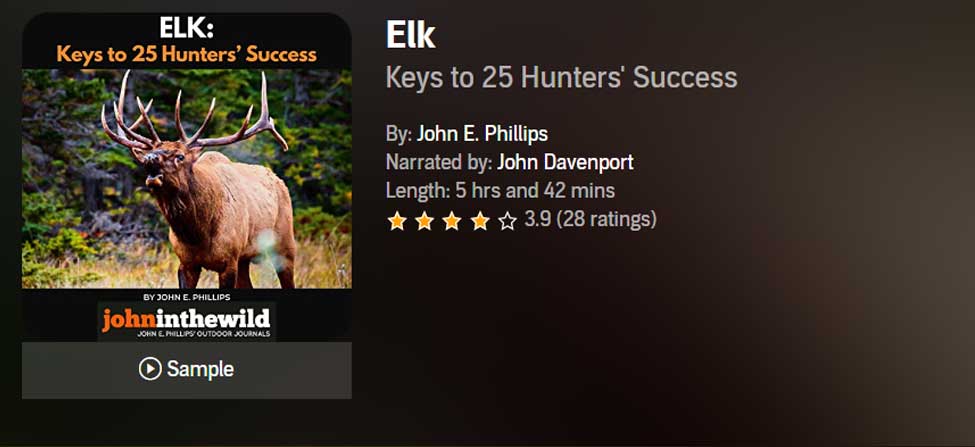
Elk: Keys to 25 Hunters’ Success
Often just one tip or tactic makes the difference in whether you take an elk home to dinner or have to hike back to the truck by yourself. In John E. Phillips’ latest elk book, Elk: Keys to 25 Hunters’ Success, you’ll learn from successful elk hunters the strategies they use to find and take elk.
Many know that the technique that seems to work most often is to hunt where other elk hunters don’t and understand where the elk are before you go on a hunt by studying data from each state, visiting HuntData (see chapter 1), examining maps, and reading postings on elk forums.
This book also tells you how to get ready physically for an elk hunt, including participating in Train to Hunt Competitions, what gear you need to take, how to enjoy a successful do-it-yourself elk hunt, or how to pick the best elk guide for you. You’ll also hear about the X System and the Broken Y System of hunting elk.
Although no one person has all the answers on how to help you find and take your elk, I’m convinced that this book’s outdoors men and women will teach you how to have satisfying elk hunts.
As my friend Karl Badger once told me, “Elk hunting doesn’t get any better than when I ride horses into the high backcountry, see two grizzly bears, hear a pack of wolves howl close to camp all night long, eat plenty of delicious food prepared on a fire and enjoy the company of good friends.”
VERSIONS: AUDIBLE, KINDLE & PRINT
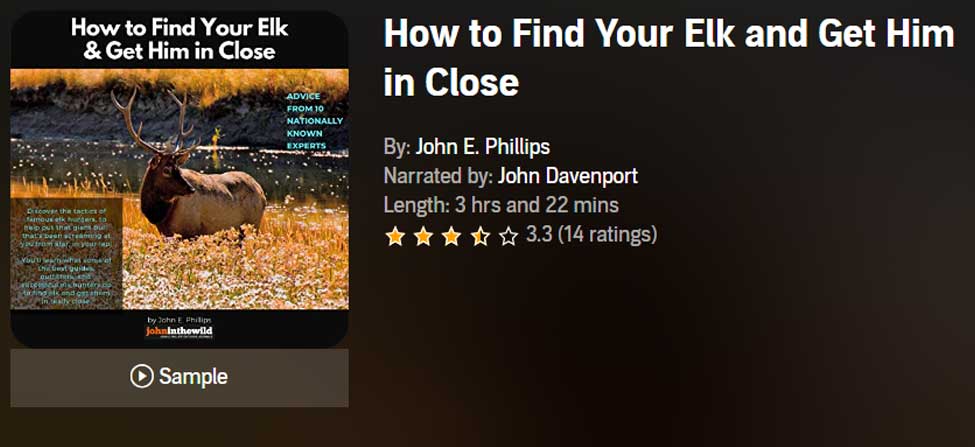
How to Find Your Elk and Get Him in Close will teach you the tactics of 10 nationally known elk hunters, to help put that giant bull that’s been screaming at you from afar, in your lap. You’ll learn what some of the best guides, outfitters, and successful elk hunters do to find elk and get them in really close.
Also in this audiobook, you’ll notice that the majority of the experts call elk to within bow range. We selected numerous bowhunters and bowhunting guides, since the bowhunter has to get much closer to a bull than the gun hunter does – often less than 20 or 30 yards – practically in your lap.
On one elk hunt, I’d heard this bull bugle all morning. My guide had called him within 30 yards, and he was standing just inside black timber. I saw the smoke from his nose wafting out into the icy air less than 30-yards away. All the bull had to do was step out, and I could take the shot with my bow. But then, through no fault of my guide or me, the bull vanished.
The only conclusion I could come up with to understand why the bull I wanted to take with my bow hadn’t stepped out and given me a shot, was because he got raptured. He evidently had left the earth with no trace of himself.
This hunt was when I started wanting to learn more about hunting elk up close. In this book, I’ve tried to find some of the most knowledgeable, experienced, and practical elk hunters. I’ve always found that the best way to learn any outdoor skill, is to either hunt or fish with the best sportsmen in that field.
Often, in elk hunting, that means elk guides, who generally hunt every day of the season and receive a salary for every hunter they guide. So, I’ve put together a group of some of the best elk hunters I know to help us all learn how to find bull elk and get them in close.
VERSIONS: AUDIBLE, KINDLE & PRINT

